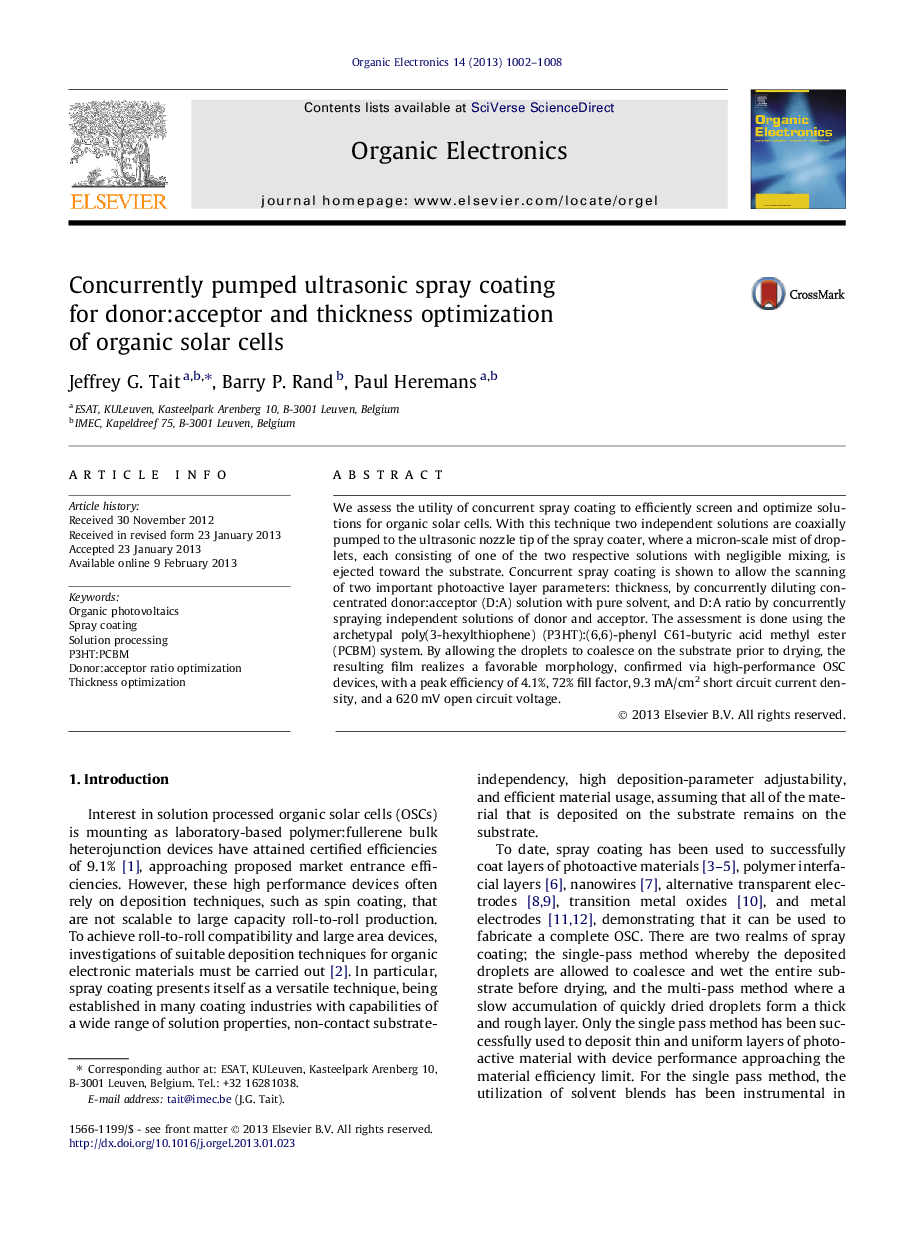| Article ID | Journal | Published Year | Pages | File Type |
|---|---|---|---|---|
| 1267444 | Organic Electronics | 2013 | 7 Pages |
We assess the utility of concurrent spray coating to efficiently screen and optimize solutions for organic solar cells. With this technique two independent solutions are coaxially pumped to the ultrasonic nozzle tip of the spray coater, where a micron-scale mist of droplets, each consisting of one of the two respective solutions with negligible mixing, is ejected toward the substrate. Concurrent spray coating is shown to allow the scanning of two important photoactive layer parameters: thickness, by concurrently diluting concentrated donor:acceptor (D:A) solution with pure solvent, and D:A ratio by concurrently spraying independent solutions of donor and acceptor. The assessment is done using the archetypal poly(3-hexylthiophene) (P3HT):(6,6)-phenyl C61-butyric acid methyl ester (PCBM) system. By allowing the droplets to coalesce on the substrate prior to drying, the resulting film realizes a favorable morphology, confirmed via high-performance OSC devices, with a peak efficiency of 4.1%, 72% fill factor, 9.3 mA/cm2 short circuit current density, and a 620 mV open circuit voltage.
Graphical abstractFigure optionsDownload full-size imageDownload as PowerPoint slideHighlights► A single ultrasonic spray nozzle with concurrently pumped coaxial tubing allows for feeding two solutions simultaneously. ► Photoactive layer thickness (60–700 nm) optimization was achieved via concurrent dilution with pure solvent. ► Donor:acceptor ratio optimization was achieved via concurrent mixing of separate donor and acceptor solutions. ► Concurrently pumped spray coating was used to deposit high-performance P3HT:PCBM photoactive layer.
